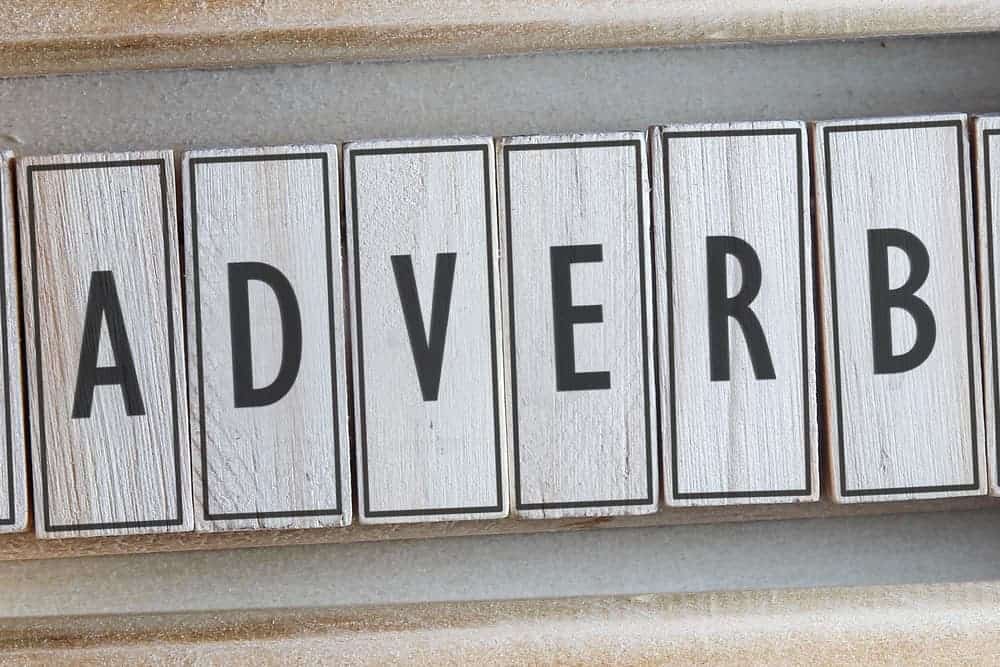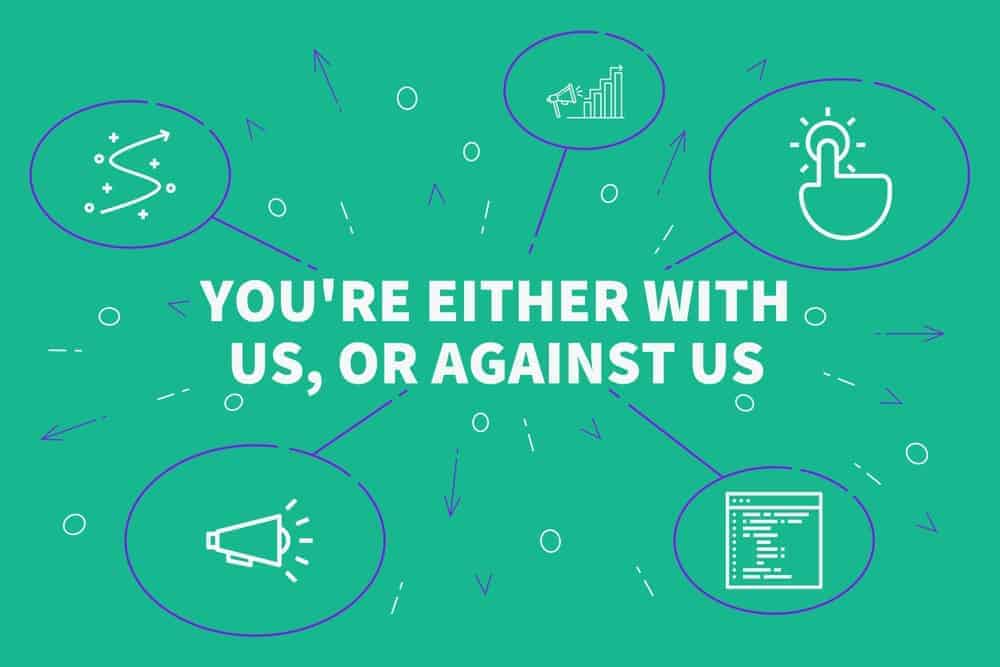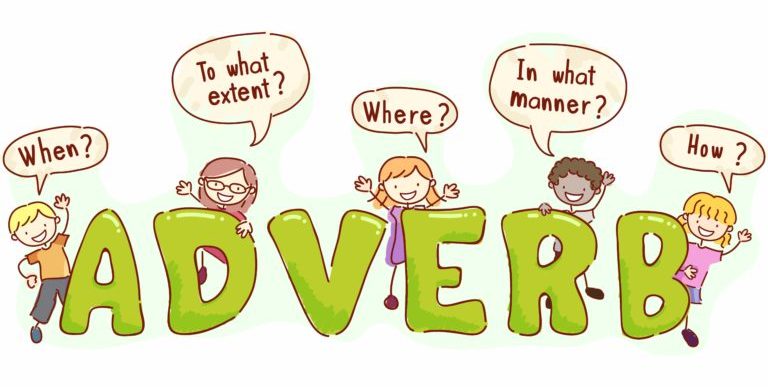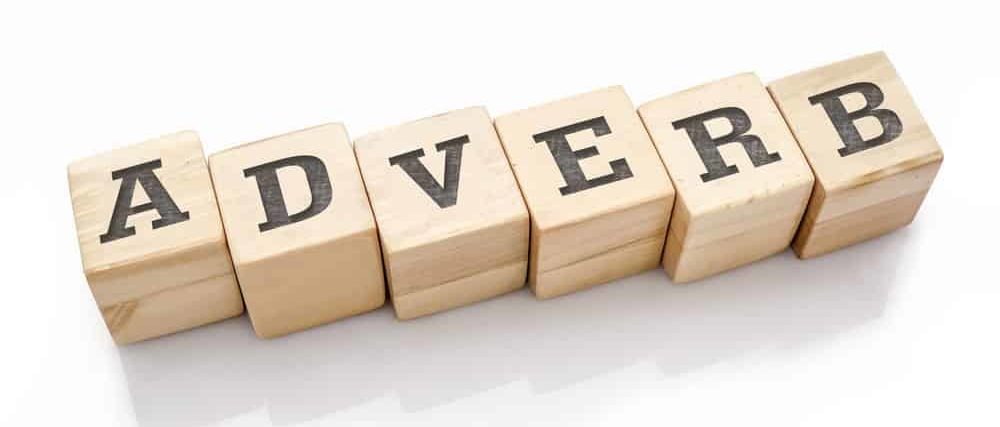
Adverbs are parts of speech with multiple functions. They’re used to modify a verb, an adjective, another adverb, noun phrases, prepositional phrases, and whole clauses or sentences.
They provide the readers with further information about the manner, place, time, frequency, certainty, and other details as indicated by the verb. When used to modify an adjective or another adverb, they’re able to show the degree.
Related: Types of Speech | Types of Adjectives | Types of Metaphors | Types of Diction | Types of Nouns | Types of Verbs | Types of Pronouns | Types of Conjunctions | Types of Prepositions
Basic Types of Adverbs
Interrogative Adverbs

When words such as “where,” “when,” “how,” and “why” are placed at the very beginning of a question, they are called interrogative adverbs. The sentences are answered with either another sentence or a prepositional phrase. When an interrogative adverb is used in a question, you have to invert the subject and verb and place the verb first. Below are some examples.
- How: How is your mother doing? She is doing fine.
- When: When does the news come on? At 11 o’clock.
- Where: Where is my green dress? In the closet.
- Why: Why is he so early? The alarm clock was wrong.
The word “how” can be used four different ways, as shown in the following examples.
- If used by itself, it can be used to answer the question “in what way.” Examples include “how do I get to the mall?” and “how did you make this delicious cake?”
- If “how” is used with an adjective, it is used to ask about the degree of a certain attribute. Examples include “how tall is your son?” and “how young is your daughter?”
- If “how” is used with words such as “many” and “much,” it always refers to the quantity of an item. Examples include “how many apples do you want to buy?” and “how much cocoa do you need for your recipe?”
- If the word is used with other adverbs, it indicates the degree or frequency of a certain action. Examples include “how often do you travel outside the country?” and “how loudly did I snore last night?”
Relative Adverbs

Relative pronouns include words such as whenever, whatever, where, and when, among others, and they act as adverbs when they join either clauses or sentences together. As such, relative adverbs are adverbs that introduce a relative clause. They act as subjects inside of a relative clause, and in a way they are like conjunctions because they connect these relative clauses to either nouns or pronouns, i.e., subjects. Relative adverbs can introduce a group of words, such as an adjective clause, and they can be used in three different ways.
- Reference to a place: when the relative adverb “in which” or “at which” refer to a location. Examples include “this is the mall where I bought my luggage” (relative adverb) and “this is the spa in which I got my facial” (relative pronoun and a preposition).
- Reference to an expression of time: when the relative adverb “when” refers to an expression of time. Examples include “Two is the time when we will take a nap” and “Three is when we can go back into the water.”
- Reference to a reason: when the relative adverb “for which” is used to refer to reason. Examples include “I don’t know why John is running so late today” and “I’m not sure why the repair man hasn’t shown up yet.”
When you are trying to identify the relative clause in a sentence, you can do so by looking at three aspects:
- Both a subject and a verb will always be present.
- The clause can function as adjective and answer questions about the noun or subject. An example includes “which one?”
- The sentence begins with either a relative adverb or a relative pronoun.
Simple Adverbs

These are common adverbs that usually answer five questions: what, where, when, how, and why. Simple adverbs are also broken down into various types, including the following.
- Adverbs of Degree/Quantity: adverbs of degree or quality answer questions such as “in what degree” or “how much.” They include words such as so, partly, little, fully, much, and rather.
- Adverbs of Frequency: these adverbs answer the question “how often.” Some examples of adverbs of frequency include once, hardly, again, often, frequently, and seldom.
- Adverbs of Manner: these are adverbs that answer the question “in what manner.” Such adverbs include words like well, slowly, terribly, carefully, seriously, and pleasantly.
- Adverbs of Negation or Affirmation: these types of adverbs include words such as yes, no, certainly, and surely.
- Adverbs of Number: these are adverbs that answer the question “in what order.” They include adverbs such as never, lastly, firstly, twice, third, and once.
- Adverbs of Place: these adverbs answer the question “where,” and they include words such as everywhere, upstairs, away, outside, nowhere, and here.
- Adverbs of Reason: adverbs of reason answer the question “why,” and they include words such as consequently, hence, therefore, and thus.
- Adverbs of Time: these are adverbs that answer the question “when.” They include words such as formerly, tomorrow, now, yesterday, soon, and lately.
There are also three forms of adverbs, which include:
- The positive form. This is the basic form of the adverb, such as high or loud. If the adverb has “ly” on the back of it, the word used is highly or loudly.
- The comparative form. This is formed by adding “er” after the adverb, such as higher or louder. Adverbs that have “ly” at the end of the word use the word “more” in front of them, such as more highly or more loudly.
- The superlative form. This is formed by adding “est” after the adverb, such as highest and loudest. Adverbs with “ly” at the end of the word use the word “most” in front of them, such as most highly or most loudly.
- In addition, adverbs used irregularly include forms such as far (positive), farther (comparative), and farthest (superlative).
Miscellaneous Types of Adverbs

Focusing Adverbs
What do focusing adverbs do? Their job is to single out different types of information, refer back to something, or express some type of restriction. Adverbs can be placed in various parts of the sentence and be used with all types of words, but since the rules about adverbs are sometimes a bit of a challenge to remember, a good dictionary or other printed reference books can be a real lifesaver. Usually placed before the noun that they qualify, focusing adverbs have meanings that can actually change depending on their exact position in the sentence. Some examples of focus verbs include:
- Also
- Either
- Especially
- Even
- Just
- Merely
- Only
- Particularly
- Purely
- Specifically
More information on focusing adverbs includes:
- Also: the word “also” will add information to the sentence. An example includes “you have to pass the exam and also pass all of the quizzes to pass.”
- Even: the word “even” usually indicates surprise. An example of this is “everyone wants to win the lottery, even you.”
- Only: the word “only” expresses some type of restrictive action. An example is “I only wanted you to be my friend.”
Adverbs That Signal Attitude
These are the types of adverbs that either interpret certain events or describe a certain belief towards that events. They also serve as adverbs of manner, and include words such as:
- Apparently
- Clearly
- Hopefully
- Naturally
They can be found in various positions in the sentence, and below are some examples of how they can be used:
- Clearly, you don’t care what happens during the election.
- You can shop with me, naturally.
- Hopefully, you will learn something from the mistake you just made.
- This was apparently the first time he failed an exam.
Adverbs of Evaluation
Though some of these words overlap into other categories of adverbs, adverbs of evaluation are classified according to their function, and they include three main categories:
- Adverbs of attitude. These adverbs are used to make a point very clear, and they include words such as honestly, frankly, surprisingly, interestingly, hopefully, and luckily.
- Adverbs of certainty. Adverbs of certainty are used to show how strongly we feel about something. Examples include words such as undoubtedly, apparently, doubtlessly, obviously, definitely, and presumably.
- Adverbs of judgment. These words are used to show a judgment on another person’s actions, or even on our own. These adverbs include words such as unfairly, kindly, bravely, foolishly, wrongly, and fairly.
Conjunctive (Linking) Adverbs
Conjunctive or linking adverbs link clauses or ideas and are used in both oral and written presentations. They are called this because in many instances, these adverbs serve the same function as conjunctions do. A partial list of conjunctive adverbs is below.
- Accordingly
- Besides
- Comparatively
- Furthermore
- Incidentally
- Likewise
- Moreover
- Nevertheless
- Otherwise
- Similarly
A conjunctive adverb describes the relationship between two main, or independent clauses. Also called a transitional conjunction or a cohesive conjunction, conjunctive adverbs are often found at the beginning of a main clause and followed by a comma. Conjunctive adverbs can be placed anywhere in the clause and can be used as an interrupting phrase or word.
Conjunctive adverbs, depending on what they mean, can affect the clause it is a part of, and they sometimes follow a semicolon. In other words, conjunctive adverbs have more than one use, but the important thing to remember is that they always connect two sentences or clauses.
If you are not sure if a connecting word is a conjunctive adverb, there is a way for you to know for sure. Simply move the connecting word to another place in the clause. Conjunctive adverbs can be moved and the sentence will still make sense. If you are trying to move words such as “because” and “if” (subordinating conjunctions) or “but,” “for,” “nor,” or “yet” (coordinating conjunctions), you’ll find they are not able to be moved.
Fun Facts about Adverbs

They Make Asking a Question Easier
Since adverbs answer questions such as where, how, when, who, and what, they are often used as the first word in a sentence that is asking a question. In fact, there are even adverbs described as interrogative adverbs, and these are used most often for this particular purpose.
Serving Many Different Purposes
Adverbs do more than simply answer some types of questions. In general, adverbs are used to modify a verb in a sentence, and they include words such as well, quickly, later, and incredibly.
Adverbs Help Describe What is Going On in the Sentence
Adverbs give you information in the sentence that you can’t describe any other way. For example, claiming that the “adults are staying outside in the sun” is giving you a lot of information, including where the adults are going to be soon. Adverbs are very descriptive.
Adverbs in Other Languages
Adverbs can be found in many other languages in addition to the English language. To form an adverb in French, you add the letters “ment;” in Scandinavia, you add “t,” and you add “mente” to adverbs in the Spanish, Portuguese, and Spanish languages.
A Multi-Functional Word
Adverbs do a great job of modifying a verb, but they can modify adjectives and other adverbs, as well. An example of the latter includes “he yells very loudly.”
Adverbs of Manner
Adverbs of manner can easily be made and used simply by adding “ly” at the end of an adjective. An example would be “you have seriously messed up the deal.”
Adverbs Complete the Typical Sentence
Most clauses or sentences contain adverbs, and they give you information on the sentence’s time, certainty, manner, place, and frequency.
An Important Part of Speech
English grammar considers adverbs to be a very important part of speech, and when you are learning English, even as a second language, you are always going to learn a lot about adverbs.
Adverbs as Part of Linguistics
In linguistics, adverbs can be described two different ways:
- A modifier of verbs for categories such as direction, manner, place, and time.
- A modifier of words that include other adverbs, adjectives, clauses, phrases, sentences, and verbs.
Glossary of Terms in Grammar

Adjective: An adjective is a word that modifies either a noun or a pronoun.
Adjective Clause: This is a subordinate clause that modifies either a noun or a pronoun, and it usually begins with words such as who, whom, whose, that, or which.
Adverb: A word that modifies an adjective, a verb, or even another adverb. There are different types and different forms of adverbs, and they can be used almost anywhere in a sentence. Adverbs include words such as quickly, slowly, dimly, directly, brilliantly, lovely, and deadly, among many others.
Adverb Clause: A subordinate clause that modifies an adjective, a verb, or another adverb. This type of clause always begins with a subordinating conjunction.
Basic Tenses: For most verbs, there are three basic tenses: present, past, and future.
Clause: A clause is a group of words with certain words in them, including a subject and a form, and the words always form a part of a sentence.
Comparative Adverbs: These adverbs indicate that a quantity of something is either lesser or greater than another item. Some examples of comparative adverbs include prettier, uglier, faster, slower, fairer, and darker.
Conjunction: Words that join certain words, but they can also join sentence parts and phrases. The three main types of conjunctions are coordinating conjunctions, which join similar words, clauses, or phrases to each other, correlative conjunctions, which join similar words, clauses, or phrases, but in pairs, such as either/or and neither/nor, and subordinating conjunctions, which join main clauses and subordinate clauses together.
Conjunctive Adverbs: These adverbs act as a segue from one complete idea to another.
Dependent Clause: A dependent clause is dependent on the rest of the sentence for its meaning and is unable to stand on its own.
Direct Object: When a verb directly acts upon a noun, a person, place, or thing, it can be called a direct object. In the following sentence, the direct object is “cake:” “today I baked a cake.”
Independent Clause: Also known as a main clause, the independent clause can stand alone and does not modify anything.
Indirect Object: These are objects whereby the verb doesn’t directly act upon the noun or subject. In the sentence “I sent the letter to Mary,” the indirect object is Mary.
Intensifier: An intensifier is an adverb that plays up and highlights the adjective it is describing, as in the statement “Will is quite popular with the ladies.”
Interrogative Sentence: Simply put, this is a sentence that asks a question.
Modify: If one word modifies another, that first word is providing more detail on the second word to make its definition a little clearer. It is usually an adverb or an adjective, a word or phrase that modifies another word or phrase.
Object: An object is a noun or pronoun being described by the verb.
Objective Case: The refers to the case of a noun or pronoun when it is the object of a preposition, verb, or an infinitive.
Tense of Verbs: The tenses of verbs include:
- Basic tense: past, present, and future.
- Perfect tense: past perfect, present perfect, and future perfect.
- Progressive tense: past progressive, present progressive, future progressive, past perfect progressive, present perfect progressive, and future perfect progressive.
- Emphatic tense: past emphatic and present emphatic.
10 Things to Remember About Adverbs

- Adverbs do not modify nouns. After all, not all words that end in “ly” are adverbs; in fact, many of them are adjectives. Therefore, you can say “dark room” or “darkly lit room,” but you cannot say “darkly room.”
- If a verb is used to describe one of the senses, such as appear, seem, and feel, there has to be an adjective in the sentence as well. You can say “Sarah feels good” but not “Sarah feels goodly.”
- Adverbs can be used in a sentence to further describe an adjective. For example, you can take a sentence such as “Laura was sad” and add the adverb to provide a lot more detail: “Laura was so sad that she couldn’t stop crying.”
- There are adverbs that are used to describe frequency, making them quite valuable. These words include usually, never, often, always, and sometimes, to name a few. If they are there to describe indefinite frequency, or frequency that is not specifically defined, they go in front of the verb. Adverbs that describe a well-defined or definite frequency go at the end of the sentence. Those include words such as weekly and annually. You can also put an indefinite adverb at the beginning of a sentence if you want to emphasize it a bit and call attention to it.
- There are always going to be adverbs that are used improperly, including words such as really, definitely, and actually. Saying that visiting a haunted house left you with an “extremely creepy feeling” simply doesn’t sound as good as saying it left you with a “creepy feeling.”
- It is possible to pair any action verb with an adverb. You do something well, not good. An example would be “People with braces sometimes talk slowly.”
- If you’re trying to decide whether to use an adverb or an adjective, try the “to be” trick. If the sentence works with any form of the verb “to be,” it is the right one to use. Saying “the teacher is friendly” works because “friendly” is an adjective.
- If you are using linking verbs in your sentence and they do not describe any type of action, either predicate adjectives or common adjectives need to be used. This is because these types of adjectives refer back to a noun or pronoun in the first part of a sentence: “I feel good, and Mary was nervous.”
- In addition to its various other uses, an adverb can add detail to a sentence and even express certain quantities. It is easy to recognize words such as “especially” and “extremely” as adjectives, but there are other words that can be used in the same way, including “every,” “much,” “most,” and “each.” An example of this would be “Bob did very well at the corporate retreat.”
- If the sentence you’re developing is a question, you have to place the adverb after the verb. An example would be “is Donna usually this sad?”

Jon Dykstra is a six figure niche site creator with 10+ years of experience. His willingness to openly share his wins and losses in the email newsletter he publishes has made him a go-to source of guidance and motivation for many. His popular “Niche site profits” course has helped thousands follow his footsteps in creating simple niche sites that earn big.





